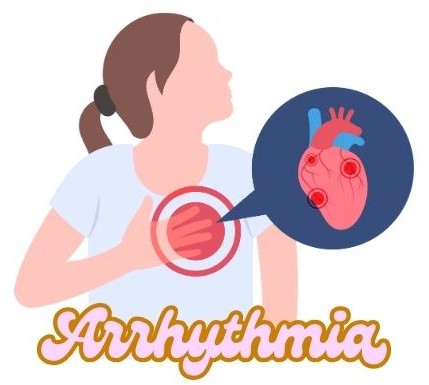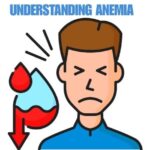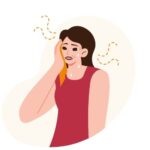Arrhythmia refers to an irregular heartbeat, which can occur when the electrical impulses that coordinate heartbeats do not function properly. This can result in the heart beating too quickly, too slowly, or inconsistently. While some arrhythmias are harmless, others can be serious and require medical attention. This article delves into the types of arrhythmias, their causes, symptoms, diagnostic methods, and treatment options.
What is Arrhythmia?
The heart’s electrical system controls the timing and rhythm of heartbeats. Arrhythmias can disrupt this system, leading to a variety of conditions that may affect the heart’s efficiency in pumping blood.
Normal Heart Rhythm
- A normal heart rhythm is typically between 60 and 100 beats per minute (bpm) when at rest. The heart’s electrical impulses originate from the sinoatrial (SA) node, located in the right atrium, which acts as the heart’s natural pacemaker.
Types of Arrhythmia
Arrhythmias can be classified based on their origin and the nature of the irregularity:
1. Bradycardia
- Description: A slower than normal heart rate (below 60 bpm).
- Causes: Can be caused by aging, heart tissue damage, or conditions affecting the SA node.
- Symptoms: Fatigue, dizziness, fainting, or shortness of breath.
2. Tachycardia
- Description: An abnormally fast heart rate (over 100 bpm).
- Types:
- Supraventricular Tachycardia (SVT): Originates above the ventricles; includes atrial fibrillation and atrial flutter.
- Ventricular Tachycardia (VT): Originates in the ventricles; can be life-threatening.
- Symptoms: Palpitations, chest pain, lightheadedness, or fainting.
3. Atrial Fibrillation (AFib)
- Description: A common type of arrhythmia characterized by rapid and irregular beating of the atria.
- Causes: High blood pressure, heart disease, excessive alcohol consumption, or hyperthyroidism.
- Symptoms: Palpitations, fatigue, shortness of breath, and an increased risk of stroke.
4. Atrial Flutter
- Description: Similar to AFib, but the heart’s electrical signals are more organized, leading to a rapid but regular rhythm.
- Symptoms: Similar to AFib, including palpitations and dizziness.
5. Ventricular Fibrillation (VFib)
- Description: A life-threatening arrhythmia where the ventricles quiver instead of pumping effectively.
- Causes: Often caused by a heart attack or significant heart damage.
- Symptoms: Sudden collapse, loss of consciousness, and lack of pulse.
6. Premature Beats
- Description: Extra beats that disrupt the regular heart rhythm; can occur in the atria (PACs) or ventricles (PVCs).
- Symptoms: Often benign but may cause a feeling of skipped beats or palpitations.
Causes of Arrhythmia
Arrhythmias can arise from various factors that affect the heart’s electrical system. Understanding these causes is crucial for prevention and management. Here’s a detailed look at the different factors contributing to arrhythmias:
1. Heart Conditions
- Coronary Artery Disease (CAD): Narrowing or blockage of the coronary arteries can reduce blood flow to the heart muscle, leading to ischemia and arrhythmias.
- Heart Valve Disorders: Malfunctioning heart valves can disrupt normal blood flow, causing strain on the heart and potentially leading to arrhythmias.
- Heart Failure: This condition affects the heart’s ability to pump blood effectively, increasing the risk of irregular heartbeats.
- Previous Heart Attacks: Damage to heart tissue from a heart attack can disrupt the electrical pathways in the heart, leading to arrhythmias.
- Cardiomyopathy: Diseases of the heart muscle can change its size, shape, and thickness, impacting electrical activity.
2. Electrolyte Imbalances
- Potassium, Calcium, and Magnesium: These electrolytes are vital for maintaining the heart’s electrical balance. Imbalances, whether due to dehydration, medications, or underlying health issues, can trigger arrhythmias.
- Hyperkalemia: Elevated potassium levels can lead to dangerously slow heart rates or even cardiac arrest.
- Hypokalemia: Low potassium levels can cause irregular heartbeats and increased heart rate.
3. Medications
- Prescription Medications: Certain drugs, especially those affecting the heart (like beta-blockers, diuretics, and some antidepressants), can provoke arrhythmias.
- Over-the-Counter Medications: Some cold and allergy medications contain stimulants that can increase heart rate.
- Recreational Drugs: Substances like cocaine and amphetamines can significantly affect heart rhythm.
4. Lifestyle Factors
- Alcohol Consumption: Excessive alcohol intake can lead to holiday heart syndrome, characterized by atrial fibrillation.
- Caffeine: High levels of caffeine can trigger palpitations and increase heart rate in sensitive individuals.
- Smoking: Nicotine and other chemicals in tobacco can irritate the heart and affect its electrical system.
- Obesity: Excess weight can increase the risk of conditions like sleep apnea and high blood pressure, both of which are linked to arrhythmias.
5. Medical Conditions
- Thyroid Disorders: Both hyperthyroidism (overactive thyroid) and hypothyroidism (underactive thyroid) can disrupt heart rhythm.
- Diabetes: High blood sugar levels can damage blood vessels and nerves that control the heart, increasing the risk of arrhythmias.
- Sleep Apnea: This condition causes intermittent breathing interruptions during sleep, leading to oxygen deprivation and increased heart strain.
- Chronic Lung Diseases: Conditions like COPD can affect oxygen levels and heart function, leading to arrhythmias.
6. Genetic Factors
- Inherited Conditions: Some arrhythmias have a genetic basis, such as Long QT syndrome, Brugada syndrome, and familial atrial fibrillation. These conditions can affect the heart’s electrical pathways and predispose individuals to arrhythmias.
7. Age-Related Changes
- As individuals age, changes in heart structure and function can increase the risk of arrhythmias. This includes stiffening of the heart walls, degeneration of the heart’s electrical system, and an increase in coronary artery disease.
8. Stress and Anxiety
- Emotional stress and anxiety can trigger the release of hormones that increase heart rate and can lead to palpitations. Chronic stress may also contribute to the development of heart disease.
9. Infections and Inflammatory Diseases
- Myocarditis: Inflammation of the heart muscle due to infection can disrupt normal electrical conduction.
- Endocarditis: Infection of the heart valves can lead to arrhythmias due to damage to the heart tissue.
The causes of arrhythmia are diverse, ranging from heart-related conditions to lifestyle choices and genetic factors. Understanding these causes can help individuals take preventive measures and seek appropriate treatment. If you suspect you may have an arrhythmia or are experiencing related symptoms, it’s essential to consult a healthcare provider for evaluation and management.
Symptoms of Arrhythmia
The symptoms of arrhythmia can vary widely depending on the type and severity:
- Palpitations: A feeling of the heart racing, fluttering, or skipping beats.
- Dizziness or Lightheadedness: May occur due to reduced blood flow.
- Shortness of Breath: Difficulty breathing, especially during physical exertion.
- Fatigue: Unusual tiredness or weakness.
- Chest Pain: Discomfort or pain in the chest, which may indicate a more serious condition.
- Fainting (Syncope): Loss of consciousness due to a significant drop in blood flow to the brain.
Diagnosis of Arrhythmia
Diagnosing arrhythmia typically involves several steps:
1. Medical History and Physical Examination
- A healthcare provider will assess symptoms, medical history, and family history of heart conditions.
2. Electrocardiogram (ECG or EKG)
- A key diagnostic tool that records the electrical activity of the heart and helps identify abnormal rhythms.
3. Holter Monitor
- A portable ECG device worn for 24-48 hours to capture heart activity over an extended period, especially during normal activities.
4. Event Monitor
- Similar to a Holter monitor but used for a longer duration, allowing patients to record their heart rhythms when experiencing symptoms.
5. Echocardiogram
- An ultrasound of the heart that provides images of heart structure and function, helping to identify underlying heart issues.
6. Stress Testing
- A test that monitors heart activity during physical exertion to evaluate how the heart responds to stress.
7. Electrophysiological Study (EPS)
- An invasive test that examines the heart’s electrical system to identify abnormal pathways that may be causing arrhythmias.
Treatment Options for Arrhythmia
Treatment for arrhythmia depends on the type, severity, and underlying causes. Options include:
1. Lifestyle Changes
- Reducing alcohol and caffeine intake, quitting smoking, managing stress, and maintaining a healthy diet and exercise routine.
2. Medications
- Antiarrhythmic Drugs: Help control heart rate and restore normal rhythm (e.g., amiodarone, sotalol).
- Beta-Blockers: Used to manage tachycardia and reduce symptoms.
- Anticoagulants: Often prescribed for AFib to reduce the risk of blood clots and stroke.
3. Medical Procedures
- Cardioversion: A procedure to restore normal heart rhythm using electrical shocks or medications.
- Catheter Ablation: A minimally invasive procedure to destroy the heart tissue causing abnormal electrical signals.
- Implantable Devices:
- Pacemaker: A device implanted to regulate heartbeats in cases of bradycardia.
- Implantable Cardioverter Defibrillator (ICD): A device that monitors heart rhythm and delivers shocks if life-threatening arrhythmias occur.
4. Surgery
- In some cases, surgical interventions may be necessary to correct structural heart issues contributing to arrhythmias.

Arrhythmia is a complex condition with a wide range of types and potential impacts on health. Early diagnosis and appropriate management are crucial to prevent complications and improve quality of life. If you experience symptoms suggestive of an arrhythmia, it is essential to consult a healthcare provider for evaluation and treatment. With advancements in medical technology and treatments, many individuals with arrhythmias can lead healthy, active lives.







